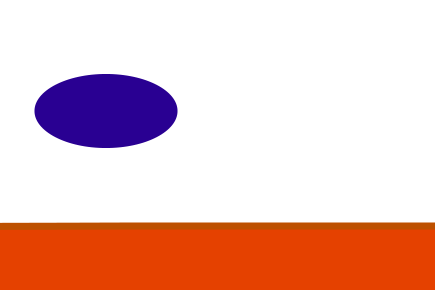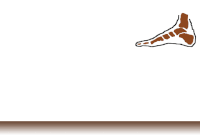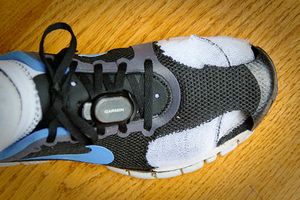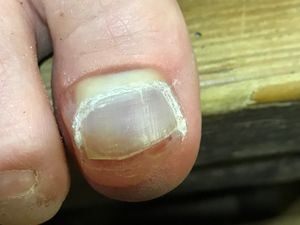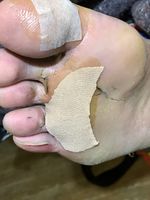Blister Prevention
Runners should not get blisters except for the most extreme situations. I suffer from a skin condition called Epidermolysis Bullosa that makes my skin blister easily, but I can run 100+ miles without blisters.
- Good Running Form is important for blister prevention. If your foot scrapes as it lands then the shearing forces can cause blisters.
- Shoes have to fit correctly, which is surprisingly tricky. Most running shoes are not designed to fit the human foot, and have two boxes that squash the toes in. I frequently see blisters in ultrarunners wearing Hoka shoes, but other conventionally shaped shoes are also problematic. I'd recommend cutting open the toe box as this prevents a lot of toe blister problems. Alternatively, focus on Altra and Topo shoes, or look for other shoes like the Merrell Trail Glove that are shaped for the human foot.
- While socks can't prevent blisters from badly fitting shoes, you can get blisters wearing could shoes and poor quality socks.
- Hydration and electrolyte intake can be a factor, as these can cause your feet to shrink or swell.
- Calluses are a potential warning sign, and it's common to see blisters form under calluses. While it's worthwhile keeping calluses file down and moisturized, it's far more important to fix the underlying cause.
- Toe nail care is critical; keep them short and equally important, smooth the edge so it's rounded and won't catch on the inside of your shoes.
Contents
[hide]- 1 Causes of blisters
- 2 Blisters and Calluses
- 3 Preventing blisters
- 4 Desperate Measures
- 5 Preventing reoccurring blisters
- 5.1 Blisters on the tips of the toes
- 5.2 Blisters under or behind toe nails
- 5.3 Blisters on the sides of the forefoot
- 5.4 Blisters on the back or sides of the heel
- 5.5 Blisters between toes
- 5.6 Blisters under the forefoot
- 5.7 Blisters under the front of the forefoot
- 5.8 Blisters under the heel of the foot
- 5.9 Blisters along the edge of the insole
- 5.10 Blisters under the arch
- 6 Skin Toughening
- 7 Read the foot care bible
1 Causes of blisters
Blisters are primarily caused by shearing force, which is where force is applied to the skin across its surface. Blisters can also be formed due to trauma, such as stubbing your foot, or being squashed by ill-fitting shoes.
1.1 Exacerbating factors – Heat & Moisture
Neither heat nor moisture will cause blisters, but they will make them more likely as they both tend to weaken the structure of the skin. If the skin is wet for long enough it will macerate, which sometimes called 'prune skin'. Macerated skin tends to wrinkle up, become white, quite soft and is far more likely to blister.
2 Blisters and Calluses
A callus is a thickening of the skin, caused by friction and pressure. While a callus can help protect against the friction and pressure that would create a blister, but if a blister forms anyway, the callus makes it treating the blister far worse. Trying to get through a callus to burst an underlying blister is painful and often fruitless. If you have a callus it should be viewed as a warning sign that something is wrong. Use this page to find and fix the underlying cause of the friction and pressure that is triggering the callus formation. It's best to remove the callus, but this should be done with care. I recommend gently filing down the callus with a nail file, taking a bit off each day. Don't aim to remove all of the thickened skin, but take it down to the point where you regain the flexibility. If you fix the underlying cause of the friction and pressure, then the skin will stop forming the callus.
3 Preventing blisters
There are several key steps to preventing blisters.
3.1 Running form
Bad Running Form will not only make you slow and cause injury, but it is also a leading cause of blisters. With a good Cadence and Running Form, your feet will land gently and quietly on the ground, producing little shearing force or impact. A slow Cadence or a poor Running Form will produce a sharp shearing force that will tear at the skin, causing blisters over time. Running downhill can make the shearing forces far worse, and a poor Downhill Running style is likely to cause serious blisters. When running downhill, your foot should land softly and the braking force should be even for the time the foot is in contact.
3.2 Shoe Fit
A badly fitting shoe can cause blisters even with good Cadence and Running Form. When buying Shoes, try them on when your feet are warm, preferably at the end of the day, and with the socks you will run in. You should generally choose your socks, and then buy your Shoes to fit with those socks. Some socks are available in a variety of thicknesses, so you can tweak the fit with different socks.
3.2.1 Loose Shoes
Your foot will slide around in a loose shoe and the pressure will tend to be in small areas, focusing the friction and shearing forces in hot spots. One test of shoe fit is to put your Shoes on, but leave the laces completely loose and see if you can walk around without your heel coming out. A good fit will have the shoe fitting gently against your foot, but without any area of higher pressure or pinching.
3.2.1.1 Changes in foot size
Remember that losing or gaining body fat can change the size of your feet. Shoes that used to fit you perfectly may not longer fit the same. A more acute problem occurs on longer races when the feet swell up. Having spare Shoes that are slightly larger, or thinner socks for later in a race can help with this problem. Of course, getting the fit right is hard, as you can't practice this until your feet are swollen, and different situations may produce differing levels of swelling.
3.2.2 Inflexible Shoes
An inflexible shoe will tend to pull away from your heal when you're running, causing problems at the back of your heal. A good running shoe should be flexible and allow you to run with a natural form. I would recommend against trying to fix your Running Form with Shoes, as this approach generally involves attempting to create a compensatory imbalance.
3.2.3 Arch Support
The arch is a naturally strong structure, but arches are damaged by forces pushing up under their middles. This is particularly true of the arches of your feet; they are strongest when there is nothing pushing up under the arch. However, if you've worn Shoes that push up under the arch for some time, this will weaken the arch. This is similar to having a limb in a cast; the cast supports the limb, but the limb weakens quickly. Therefore when you try to move to a shoe without arch support, it can be like taking a cast off a limb. Your foot will take time to strengthen and recover from using arch support. The other downside to arch support is the pressure can easily cause blisters. This is especially true of orthotics.
3.2.4 Toe Box
Ideally, the toe box of your Shoes should be big enough that your toes can't touch the sides or top of the shoe. If the toe box is slightly too small, it is easy to cut away the material to prevent contact. I generally leave a bridge of material from the very front of the shoe to near the laces to keep the sole from flopping around too much and just cut away the sides of the toe box.
3.3 Insole Edge
It is possible for the edge of the insole to cause a blister, though this is fairly rare unless the insole moves within the shoe.
3.3.1 Shoe quality
A bad seam or excess glue can cause a sharp edge that could tear up your skin. A shoe can fit correctly, but cause blisters due to manufacturing problems such as a bad seam. A shoe that bends in the wrong place can have a crease that causes a blister as well. Also, check that your insoles do not slip. Some double sided sticky tape between the shoe and the insole can prevent this.
3.4 Socks
Even the best socks will not prevent blisters if you have bad Running Form or bad Shoes. However, a bad sock will cause blisters on its own; it's vital to avoid cotton socks, or cheap socks not made for running. If you are on a tight budget, try to get a sock with seamless construction and good wicking (moisture transport) properties such as Coolmax. See Blister Prevention and Socks for more details.
3.5 Hydration
Dehydration can be a contributor to blisters, as the skin loses some of its tension (skin turgor) with significant dehydration. However, reduction in skin turgor is generally associated with 6-9% dehydration (excluding Glycogen depletion water losses), at which point the dehydration itself should be more of a problem than the blisters. Hyponatremia is a dangerous condition and one of the symptoms is swelling of the hands and feet, which can cause black toenails or blisters. Read up on Practical Hydration and The Science Of Hydration.
3.6 Calluses
Calluses are a sign of poor fitting Shoes. A callus is a spot that is likely to turn into a blister with longer distances. You can file down a callus and keep is moisturized, but that is a symptomatic approach. The key is to fix the underlying problem, which is normally the fit of your Shoes. Note that a callus is a spot that is thickening; the general thickening of the skin due to being barefoot does not tend to cause this problem. The key is to watch out for small areas or spots that have excessively thick skin.
4 Desperate Measures
I consider the following techniques 'desperate measures', as I believe they are as likely to cause problems as they are to solve them. (Note that DryMax socks should not be used with lubricants or powders, as they will damage the water repelling properties of these socks.)
4.1 Lubricants
A lubricant will reduce the friction between your skin and your socks, which can help reduce the shearing forces, and thus the blisters in some situations. However, most lubricants will also keep your feet warmer and by keeping your sweat against your skin, make the skin wetter. This added heat and moisture will soften the skin and make the chance of blisters greater overall. In cold conditions, smothering your feet in Vaseline can work well, as the added warmth is actually an advantage. Also remember that lubricating your feet can cause a problem if you do get blisters and want to tape them, as the lubricant makes it harder for the tape to stick. Wiping your feet with paper towels, then with paper towels soaked in rubbing alcohol can remove most of the lubricant, but that process takes time to do properly.
4.1.1 Types of Lubricants
Here is a partial list of some of the options
- Hydropel helps prevent the skin absorbing moisture and is particularly useful in wet conditions. It does lubricate slightly, but its water repelling powers are its prime attraction.
- SportsShield is similar to Hydropel, both being based on a silicone lubricant (dimethicone). SportsShield is available as a roll on and towelette, whereas Hydropel is dispensed from a toothpaste like tube. SportsShield goes on much easier than Hydropel and results in less friction, but less water repelling as well.
- Vaseline is cheap and can be used in large quantities. This can provide good lubrication, but tends to keep the skin quite moist. It also makes it harder to attach tape if this is required later.
- Aquaphor is quite similar to Vaseline. Though it has different ingredients, I have not found a significant practical difference as a foot lubricant.
- Bodyglide is one of the original products purposefully marketed as a sports lubricant. While effective, it does not seem to last very well, nor does it reduce the friction as much as other products.
4.2 Powders
Like lubricants, powders can reduce the friction between your feet and your socks. While powders do not keep your feet warmer or wetter in the way lubricants do, the powder does tend to clump up when damp. These clumps of powder can then lead to blisters.
4.2.1 Types of Powders
Here is a partial list of some of the options
- Blister Shield powder is Teflon, which I found helps a bit, but tends to form clumps when wet.
- Zeasorb powder absorbs six times its weight in water, which sounds effective, but water is heavy and powder is light. To absorb the level of sweat put out by a runner, a lot of powder is required, which I've found to be impractical.
See Powders and Lubricants.
4.3 Taping
Like the other desperate measures, Taping can reduce the friction between your sock and your feet. Unlike lubricants and powders, Taping can help absorb some of the shearing force, though this depends on the particular tape used. A flexible tape will just transmit the shearing force to your skin, but an inflexible tape can absorb and spread the shearing force. There are several downsides to Taping
- Taping will keep your skin warmer and wetter. This depends on the tape, but thicker tapes and tapes that are waterproof are worse. Duct tape is especially bad and will cause the underlying skin to become saturated as it holds the sweat against the skin.
- The tape can crease, causing ridges that create extra pressure and blisters. Again, duct tape is particularly bad for this.
- If the tape works loose, it can bunch up and cause a blister. Occasionally the tape can migrate around your foot and cause a blister in an unexpected and unpleasant new area.
- Should you get a blister under the tape, it can be quite painful to remove the tape to determine the extent of the problem. (I've seen a number of cases where are runner was convinced they had a blister, but the skin was fine.)
For more details see Taping.
5 Preventing reoccurring blisters
This section is intended to provide specific guidance for blisters in specific places on your feet. I've ordered the sections based on how frequently I've seen the problem.
5.1 Blisters on the tips of the toes
Blisters on the tips of the toes sometimes start with a blister under the toe nail that spreads out, and sometimes it starts on the tip and spreads under the toe nail. If you suspect the blisters are starting with the toe nail, see the next section. Suggested fixes (in order of preference)
- Have someone check your Running Form to make sure your feet are landing softly with the correct paw-back. Listen to the sound your feet make when they land for a scraping sound as well as the sensation of your foot pushing forward in your shoe at the point of landing. This is a sign that you are not pawing-back.
- If the problem is occurring on hilly courses, make sure your Downhill Running form is right. Your foot should land and be in firm contact before your foot starts to act as a brake.
- Check your Shoes are tied correctly and that the pressure on your feet to slide forward is taken by the area under the laces rather than allowing your feet to slide forward and your toes to hit the end.
- Check your Shoes are not creasing at the toe box and pressing against the tips of your toes.
- Buy Shoes with a longer toe box so that your toes do not reach the end.
- Cut open the toe box so that your toes do not reach the end.
- Wear Injinji socks (unlikely to help, but worth a try).
- Tape the ends of your toes. If you are not also wearing Injinji socks, it is best to tape all of your toes so that tape does not rub on the next toe.
5.2 Blisters under or behind toe nails
I don't have any toe nails due to my skin condition, so this is not practical experience. This type of blister sometimes manifests itself as a blue or black toenail; the toenail has not changed color, it the blister under the toenail that you can see. Suggested fixes (in order of preference)
- Trim your toes nails so they are short. I'm told that a pedicure before a big race is a good idea.
- File down the edge of your toe nails so that the edge is rounded rather than flat.
- Have someone check your Running Form to make sure your feet are landing softly with the correct paw-back. Listen to the sound your feet make when they land for a scraping sound as well as the sensation of your foot pushing forward in your shoe at the point of landing. This is a sign that you are not pawing-back.
- If the problem is occurring on hilly courses, make sure your Downhill Running form is right. Your foot should land and be in firm contact before your foot starts to act as a brake.
- Check your Shoes are tied correctly and that on downhill sections any pressure on your feet to slide forward it taken by the area under the laces rather than allowing your feet to slide forward and your toes to hit the end.
- Buy Shoes with a longer toe box so that your toes do not reach the end.
- Cut open the toe box so that your toes do not reach the end.
- Wear Injinji socks.
- Tape your toes over the nails. If you are not also wearing Injinji socks, it is best to tape all of your toes so that tape does not rub on the next toe.
5.3 Blisters on the sides of the forefoot
This section is about blisters on the sides of the forefoot, but above the line of the insole. If you have getting blisters along the insole line, see the section below. Suggested fixes (in order of preference)
- Check your Shoes are the right size; a loose shoe can rub on the sides of your feet. Also, a shoe that is tight in the forefoot but loose elsewhere can cause excess pressure.
- If the problem is occurring on hilly courses, make sure your Downhill Running form is right. Your foot should land and be in firm contact before your foot starts to act as a brake.
- Check your Shoes are tied correctly and that on downhill sections any pressure on your feet to slide forward is taken by the area under the laces rather than allowing your feet to slide forward and cause the sides of the forefoot to rub.
- Watch where you're placing your feet on trails. If you land with the edge of your foot on a rock, your foot can twist in your shoe, putting a huge shearing force on the skin at the sides of your feet.
- Consider modifying your Shoes to cut open the area that rubs.
5.4 Blisters on the back or sides of the heel
This section is about blisters on the sides or back of the heel, but above the line of the insole. If you have getting blisters along the insole line, see the section below. Suggested fixes (in order of preference)
- Check your Shoes are the right size; a loose shoe can rub on the back of your heel.
- Get socks that are long enough to prevent the top of the shoe rubbing on the skin. The short, 'no see' style socks can cause problems.
- Make sure your Shoes are not inflexible. As your foot bends when you run, an inflexible shoe will try to slide down your heel, causing blisters.
5.5 Blisters between toes
This is a particular problem with Hoka Shoes due to their tight toe box, but it happens with other shoe types as well. If the blister is at the base of the toe where it meets the forefoot then it's likely that the blister started under the forefoot. Suggested fixes (in order of preference):
- Buy Shoes with a wider toe box so that your toes are not pushed together.
- Cut open the toe box so that your toes are not pushed together.
- Wear Injinji socks.
- Use a small amount of lubricant between your toes.
- Tape the toes to prevent them rubbing together.

5.6 Blisters under the forefoot
This is probably the worst place for blisters, as it is the key load bearing part of your foot. If the blister spreads to where your toes join together, it is possible to tape this area, but it's tricky. Suggested fixes (in order of preference)
- Have someone check your Running Form to make sure your feet are landing softly with the correct paw-back. Listen to the sound your feet make when they land for a scraping sound as well as the sensation of your foot pushing forward in your shoe at the point of landing. This is a sign that you are not pawing-back.
- If the problem is occurring on hilly courses, make sure your Downhill Running form is right. Your foot should land and be in firm contact before your foot starts to act as a brake.
5.7 Blisters under the front of the forefoot
This is probably the worst place for blisters, as it is the key load bearing part of your foot. If the blister spreads to where your toes join together, it is possible to tape this area, but it's tricky. Suggested fixes (in order of preference)
- Have someone check your Running Form to make sure your feet are landing softly with the correct paw-back. Listen to the sound your feet make when they land for a scraping sound as well as the sensation of your foot pushing forward in your shoe at the point of landing. This is a sign that you are not pawing-back.
- If the problem is occurring on hilly courses, make sure your Downhill Running form is right. Your foot should land and be in firm contact before your foot starts to act as a brake.
5.8 Blisters under the heel of the foot
Suggested fixes (in order of preference)
- Have someone check your Running Form to make sure you are not heel striking.
- If the problem is occurring on hilly courses, make sure your Downhill Running form is right. You are more likely to heel strike on a steep downhill than on the flat.
5.9 Blisters along the edge of the insole
Suggested fixes (in order of preference)
- If the insole is loose, some double sided tape will hold it in place.
- If the edge of the insole is rough, try carefully rounding the edges by trimming with scissors.
- Try replacing the insole with an aftermarket alternative.
- Change shoe type.
5.10 Blisters under the arch
This is an unusual place to have blisters. Suggested fixes (in order of preference)
- Change to Shoes without arch support.
- If you have orthotics, talk to your supplier about the blister problem.
- If all else fails, pre-tape the area.
6 Skin Toughening
See Toughening Feet
7 Read the foot care bible
John Vonhof's book 'Fixing your Feet' is invaluable for dealing with blisters. Check out http://www.fixingyourfeet.com/ and Fixing Your Feet
- Category:Injury

